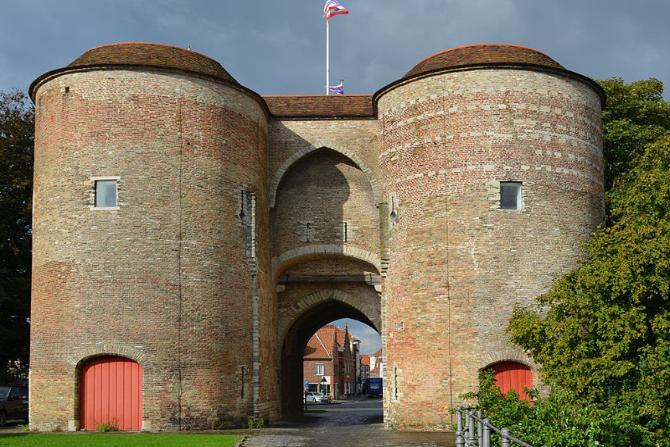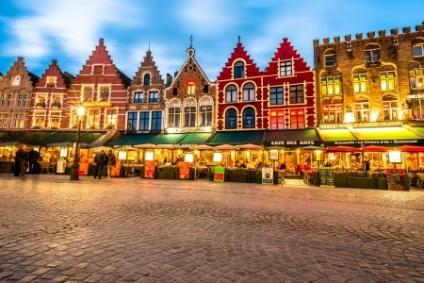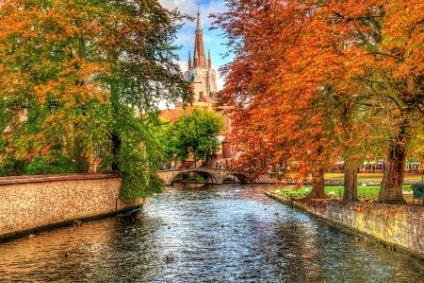The Gate of
Ghent is one of four Bruges medieval city gates which have survived from an
original seven gates and it is the only one open to the public. The Gentpoort,
Kruispoort and Katelijnepoort were designed by Maarten van Leuven and Jan van
Oudernaerde; they were constructed sometime around 1400. The route through this
gate would lead to the city of Ghent, hence the name. Foreigners, travelers and
tradesmen would enter through this portal. The gate formed an opening in the defensive
city walls. The Gentpoort Bridge crosses the ring canal from the road which
runs through the city gate. Today the gate is used as a museum and at night the
exterior is lit up.
As you
approach the gatehouse you will notice a statue of Saint Adrian above the
roadway. The saint was said to protect Bruges from the plague. Inside the
museum displays include a weapons collection and interactive touch screens
providing information about the history of the gates and city walls. Visitors
can learn how the walls were expanded over the years and how the medieval gates
were of vital importance to the survival of Bruges during wartime. Visitors can
try their hand at shooting a crossbow (on a Wii consol) as if they were the
gate watchmen. At the city gates taxes were collected on goods entering and
exiting the city. The gates were also a point of quality control over trader’s
goods. From the gate tower’s roof terrace you can get brilliant views across
the city.
Note that
the gate museum is only open on Saturdays and Sundays. If you want to see the
other three remaining gates (which can’t be visiting on the inside) they are
Ezelpoort, Kruispoort and Smedenpoort.












